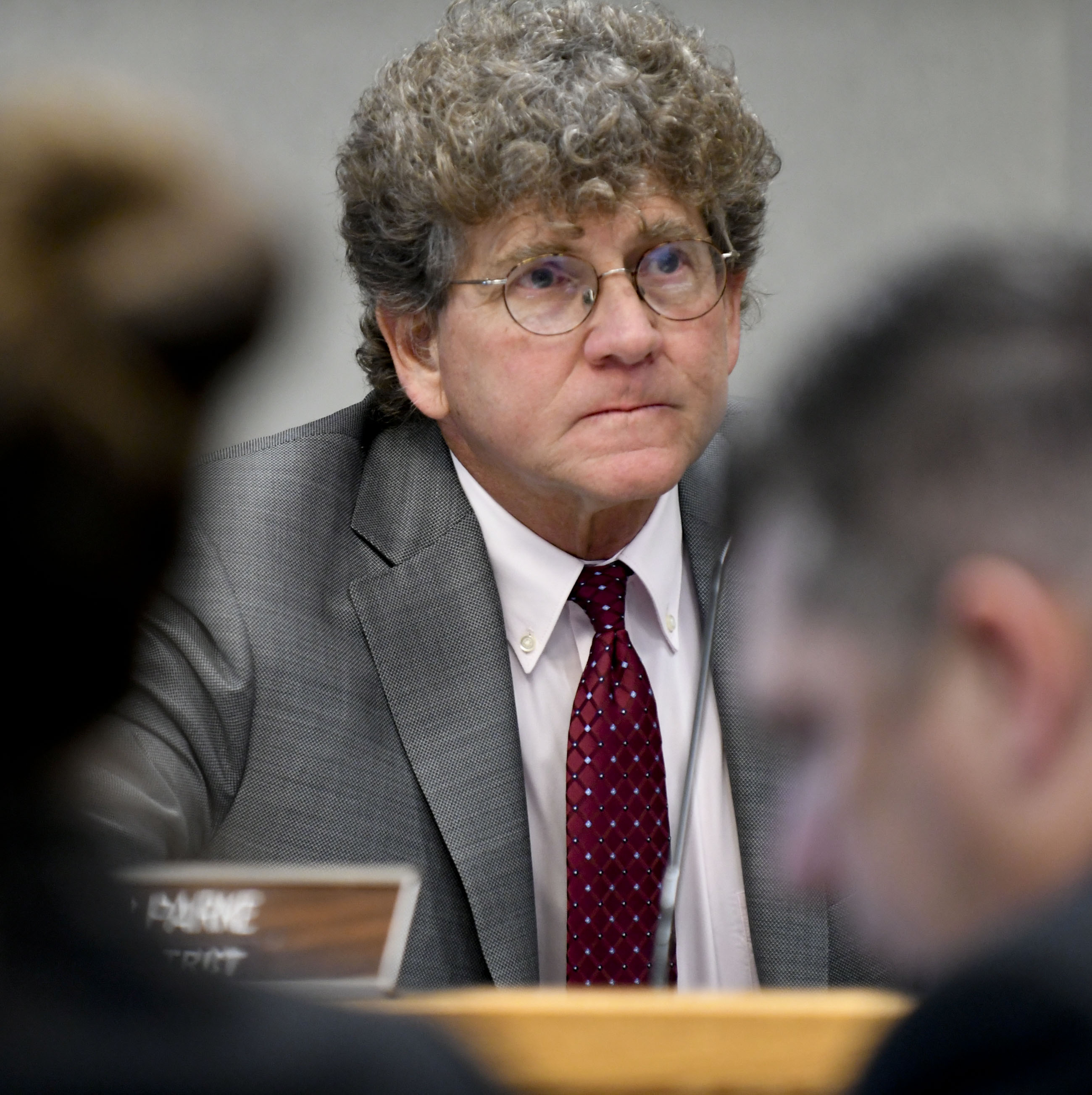Santa Barbara Battles over Cat Canyon Oil Drilling Proposal
ERG Wants 187 Steam-Injection Wells, but County Planning Commission Has Questions

Given Santa Barbara’s long-standing equine obsession, it’s perversely fitting that two of the major players looming over the county’s latest knock-down, drag-out battle over climate change and greenhouses gases are both board-certified horse nuts. I am speaking about the fight over the proposal to vastly expand existing oil operations in Cat Canyon.
The ERG proposal — one of three massive onshore-oil-production proposals now hovering on the county’s horizon — is being gnawed upon by the county’s Planning Commission, a critical but often-overlooked governmental body. If built, those three projects combined could generate 760,000 metric tons of greenhouse gases a year. ERG alone — when operating all 187 steam-injection wells — could generate 250,000 metric tons. If those numbers seem big, that’s because they are. The county’s threshold is 1,000 per project.
The scrutiny the commission is now heaping upon the ERG proposal and its environmental impact report (EIR) is far from typical. What previously might have been accomplished in just one meeting is now taking at least three. And the outcomes — certification or approval — are by no means certain. That’s in large measure because of John Parke, the new chair of the commission. Parke, an athletic mid-sixties litigator who looks suspiciously like Monty Python member Michael Palin, is hardly the only commissioner whose opinion counts. But as chair, he is asking a whole lot of questions about information not found in the EIR. And he’s not satisfied with the answers.
Parke, who got appointed to the planning commission a year ago, rides a 31-year-old Icelandic pony named Remington,a reportedly crotchety but famous equine who is in the Long-Distance Horses Hall of Fame, having passed the 10,000-mile mark. More recently, Parke and Remington are patrolling ultra-marathon human races for runners who’ve collapsed or are about to. To date, they’ve rescued six.
On the flip side of this equine equation is Scott Y. Wood, formerly of ERG, a Houston-based oil company. When the company declared bankruptcy in May 2015, Wood, its founder and charismatic leader, was unceremoniously deep-sixed. A classic oil-patch success story, Wood was a farm boy who saved his pennies, bought an oil well, and created his company. In 2000, he bought a few thousand acres around Cat Canyon with contaminated, antiquated oil wells and reportedly sunk hundreds of millions of dollars trying to bring the operation up to snuff. Under Wood’s leadership, ERG hatched its current plans to add new wells to suck thick oil tars from the Sisquoc formation by injecting massive quantities of scalding steam into the ground. According to one account, Wood got in debt trying to do the right thing when oil prices tanked, causing him and his company to go belly up. According to another version — found in the bankruptcy records — Wood lived too lavish a lifestyle, milking his investors and creditors like they were dairy cows.

One of the perks he may have abused was his fondness for polo ponies. Wood fielded a company polo team and owned a few polo fields. This, according to allegations in bankruptcy records, cost the company $5 million. His divorce attorney cost another $2 million. Wood’s personal landscaping bills allegedly cost the company $800,000. Wood was a regular at the Santa Barbara Polo & Racquet Club, where his team kicked serious ass and he threw some legendary parties. According to polo press articles, Wood was suspended for a day in 2014 for striking an opposing player with his chucker while letting loose a tsunami of profanity. Wood refused to comply. The next day, he turned up and loudly berated the umpires. For this, Wood was banished for a full year.
By the time that year expired, Wood had been excommunicated from ERG and his company brought under the thumb of its largest creditor, Beal Bank, from which he had borrowed $375 million. This bank is owned by Andrew Beal, another oil-patch billionaire from Texas, who to date has donated $10 million to help get Donald Trump elected. As reported by the New York Times, Beal likes to play high-stakes poker — for millions of dollars — with the world’s best. Currently he’s leading a crusade to undermine California’s push for alternative energy at the Federal Energy Regulatory Commission. Beal insists renewable energies enjoy unfair competitive advantages in accessing transmission lines, so he’s moving heaven and earth in favor of traditional, if dirty, energy sources. With assets worth $8 billion, Beal can move a lot of heaven and earth.
When Parke and the Planning commission evaluate just how fully ERG is — or is not — mitigating its greenhouse-gas emissions, Beal’s hostility to renewable energy at the federal level should raise red flags. For all practical purposes, ERG is now Andy Beal’s company.
Parke, it should be noted, is not out to get ERG. In fact, at the first ERG hearing, Parke all but invited Andy Caldwell of COLAB — one of the most pro-oil voices in all of Santa Barbara — to speak. Caldwell said he’d rather stick a needle in his eye. Then Parke — who knew the Environmental Defense Center was giving about 18 minutes of testimony — offered Caldwell 15 minutes. This seriously bugged some in the eco-warrior camp: Why was Parke going to such lengths?
For Parke, the commission, and the community, a key question is the 250,000 metric tons of greenhouse gases — per year — that ERG will generate. Anyone wondering about the reality of climate change and sea-level rise need only look at the recent proposal by the Bacara, the ritziest, glitziest luxury experience Goleta has to offer, to move its beachfront clubhouse — dressing rooms, snacks, the whole nine yards — 183 feet inland from the sea. The party line by ERG and county energy planners is that ERG will address this problem by buying the requisite number of offsets to mitigate its greenhouse emissions down to zero.
At the most recent hearing, Parke was not satisfied. No one has seen the list of offsets, he objected. No one knows if they’re real or imagined, conjured by some bankrupt oil company. Parke then told the old joke about the chemist, the engineer, and the economist who found themselves stranded on a desert island with cans of food but no can opener. The economist, Parke laughed, solved the problem, stating, “We’ll just assume the cans are open.” I don’t know if either the county energy staff or ERG found it amusing. Both camps contend this level of detail — at least now — is unprecedented.
The issue is even more complicated. By “assuming” a priori that the greenhouse gases could and would be mitigated, Parke has argued, such emissions can be categorized as a Class II environmental impact as opposed to a Class I impact in the EIR. This difference in nomenclature matters. If such emissions were categorized as Class I, Parke argued, the county could insist the EIR consider alternatives to how the steam — that’s then injected thousands of feet below the earth’s surface — is heated. The power needed to boil so much water is what creates most of the greenhouse gases. Burning hydrocarbons to get the job done is the problem.
Parke and other commissioners questioned why solar power could not be used. They were told it was infeasible. The sun doesn’t shine on Cat Canyon like it does in Kern County, we are told, and other places where solar power has, in fact, been used to heat steam-injection oil operations. That alternative was not explored in the EIR. Likewise, Parke wondered why ERG couldn’t plug into the electrical grid for juice; there are nearby power lines. After all, 100 percent of all electricity in California is supposed to be generated by renewables by the year 2040.
An interesting detail. After the first meeting, someone gave Parke an old photograph of the train that used to haul oil out of Cat Canyon back around 1908. Guess what? It was an electric-powered train. If electricity worked then, maybe it can work now. You don’t know until you ask.
Icelandic ponies or polo ponies: you decide.




You must be logged in to post a comment.